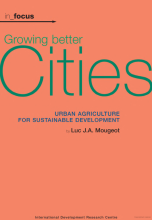Land Library
Welcome to the Land Portal Library. Explore our vast collection of open-access resources (over 74,000) including reports, journal articles, research papers, peer-reviewed publications, legal documents, videos and much more.
/ library resources
Showing items 1 through 9 of 130.The United Nations predicts that over the next 25 years nearly all population growth will be in the cities of the developing world. At current rates, 60% of the world’s total population will live in cities by 2030. As the cities grow, so does the number of urban poor.
The United Nations predicts that over the next 25 years nearly all population growth will be in the cities of the developing world. At current rates, 60% of the world’s total population will live in cities by 2030. As the cities grow, so does the number of urban poor.
Sida have supported a technical assistance to 1997. The fi rst stage of this assistance has been successfully completed in 2001. According to Sida’s decision from 2001-11-05 the technical assistance was extended through the project Cadastre Project – Fiscal Cadastre and Training”.
The studies in this book sought to understand the factors affecting rural households’ choice of income strategies and land management practices and the implications of these decisions and of policy- and program-relevant factors for agricultural production, household welfare, and land degradation.
Governments are devolving service and infrastructure provision, regulatory authority, and decisionmaking in many developing countries.
In this chapter we introduce the conceptual framework that underlies the case studies presented in this book and discuss hypotheses about the effects of key factors on community and household decisions concerning income strategies and land management.
Common property resources1 are important sources of timber, fuelwood, and grazing land in developing countries. When community members have unrestricted access to the resource, or when use regulations are ineffective, these resources are exploited on a first-come, first-served basis.
The highlands of East Africa have been endowed with a combination of moderate temperatures, adequate rainfall (falling in two distinct seasons for much of the highlands), and productive soils that make the region one of the best suited for agricultural development in all of Africa.
Numerous methods are available for increasing crop and livestock production in the Ethiopian highlands. Both national and international research institutes have developed technologies that are technically appropriate for these conditions.


